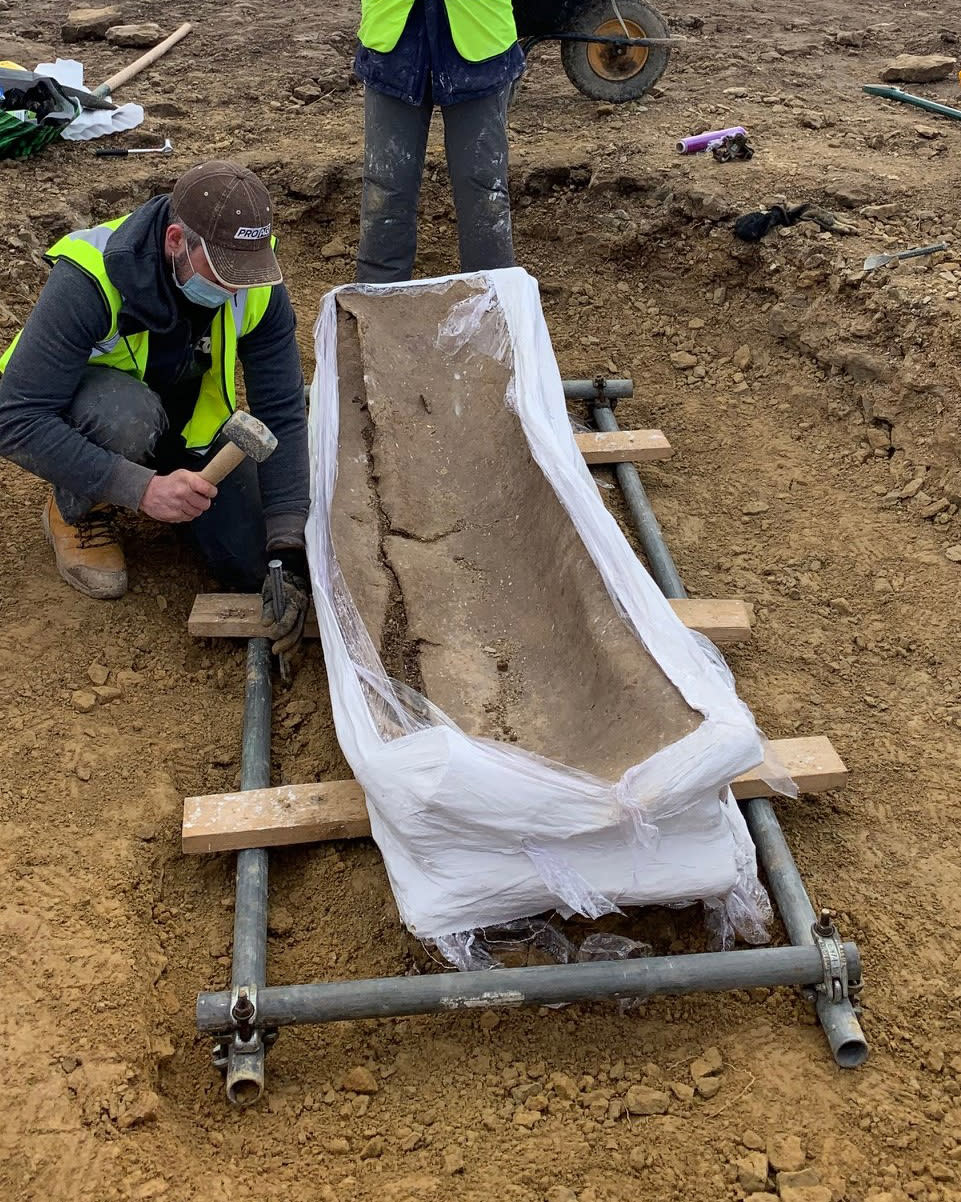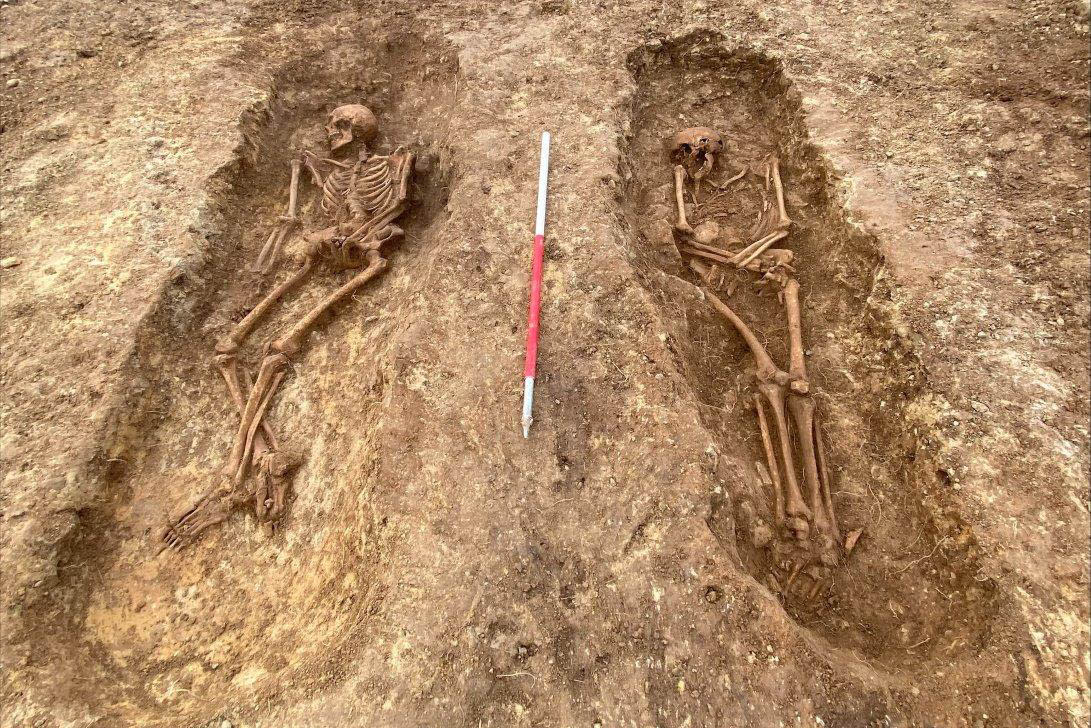PATRICK SMITH
LONDON — Newly revealed human remains could offer a rare glimpse into life in Britain through the decline of the Roman Empire and the establishment of Anglo-Saxon kingdoms.
Experts have hailed the 1,600-year-old cemetery that was unearthed near the city of Leeds, about 200 miles north of London, as a "once-in-a-lifetime" find that bridges the gap between the ancient and medieval periods.
Among the remains of more than 60 men, women and children was what is thought to be a late-Roman aristocratic woman, Leeds City Council said in a statement Monday.
The woman was found inside an ancient lead coffin at the archaeological dig near the Leeds suburb of Garforth.
The site could also indicate early Christian and Saxon burial rituals, officials said, and marks a major crossroads in a little-understood period in which the Roman Empire began its gradual decline and eventual collapse in the West, as Germanic tribes migrated from mainland Europe.
England derives its name from one of the main groups that arrived from the fifth century onward from modern-day Denmark and Germany: Angles, Saxons and Jutes.

An extremely rare lead coffin discovered at a dig near Leeds, England, could shed light on a little-understood period of British history. (West Yorkshire Joint Services / Leeds City Council)
"It is every archaeologist’s dream to work on a 'once in a lifetime' site, and supervising these excavations is definitely a career-high for me," Kylie Buxton, on-site supervisor for the excavations, said in a news release.
"There is always a chance of finding burials, but to have discovered a cemetery of such significance, at such a time of transition, was quite unbelievable."
Carbon dating is underway to establish the precise timing of the burials, as well as chemical testing, which it is hoped will shed light on the dietary habits and ancestry.
The site was discovered in spring 2022 but no announcement was made until now in an attempt to preserve the site while tests take place. The exact location of the site has not been revealed, but the remains of late-Roman and Anglo-Saxon buildings have been found nearby.
"This has the potential to be a find of massive significance for what we understand about the development of ancient Britain and Yorkshire," said David Hunter, principle archaeologist with West Yorkshire Joint Services.
"The presence of two communities using the same burial site is highly unusual and whether their use of this graveyard overlapped or not will determine just how significant the find is."

The discovery near Garforth in the north of England revealed the remains of more than 60 men, women and children who lived in the area more than 1,000 years ago. (West Yorkshire Joint Services / Leeds City Council)
Once analysis has taken place, plans are in place to display the lead coffin at Leeds City Museum in an exhibition on death customs across the world.
Saxons tended to bury their dead with items of special importance such as knives and pottery. The most famous Anglo-Saxon burial site, Sutton Hoo — thought to be a burial ship to honor the seventh-century king Rædwald — contained a fabulous collection of jeweled helmets and weapons.
Claudius, the fourth Roman emperor, began the invasion of Britain in 43 A.D., supposedly using an army of up to 20,000 men and even armored elephants. By the dawn of the first century, Rome had established its power across southern Britain and all the way up to the contested northern area later marked out by a huge wall built by the emperor Hadrian.
That control abruptly ended in 409-10 A.D. as Rome's military might faded away, with the empire distracted by pressure from invading barbarians in Italy and Gaul.
The empire would survive another 1,000 years from its eastern power base of Constantinople, but it could only limp on in the West for decades. Roman aristocrats fled Britain as villas and towns crumbled into disrepair, burying what they couldn't carry with them.
Leeds is thought to have been the center of the mysterious Celtic kingdom of Elmet, one of several entities established after the collapse of Roman control but before the dominance of Anglo-Saxon kingdoms or the coming of the Vikings in the eighth century.
Experts will investigate whether the newly found graves offer more evidence of how the people of Elmet lived alongside Saxon neighbors, at a time when England was rapidly leaving behind its pagan traditions and converting to Christianity.
